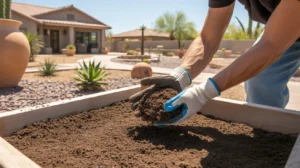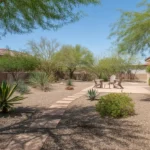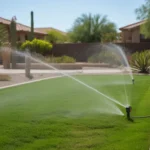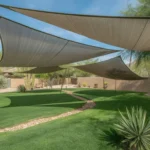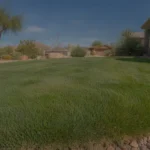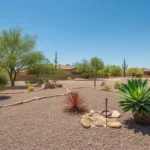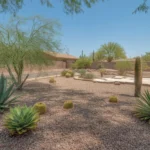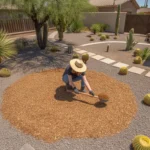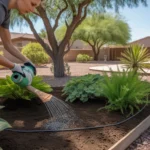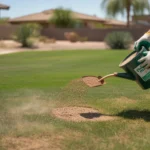As the scorching Mesa summer sets in, many homeowners face the challenge of dry, cracked soil in their yards. Extreme heat and low humidity can quickly deplete moisture, leaving your landscape parched and stressed. But with the right strategies, you can revive your soil and keep your yard thriving all season long. Here’s how to tackle dry soil and maintain a lush, healthy landscape in the heart of summer.
Understand Your Soil Type
The first step in solving dry soil issues is to know what you’re working with. Mesa yards often have clay-heavy or sandy soils that struggle to retain moisture. Clay soils can become compacted and crack when dry, while sandy soils drain too quickly, leaving plants thirsty. Identifying your soil type will guide your watering and amendment strategies.
To assess your soil, grab a handful and give it a squeeze. If it forms a tight ball that doesn’t crumble easily, you likely have clay soil. If it feels gritty and falls apart readily, it’s probably sandy. Loamy soils, the ideal middle ground, will hold together but break apart with gentle pressure. Knowing your soil’s tendencies is key to keeping it hydrated in the Mesa heat.
Amend with Organic Matter
One of the best ways to improve dry soil is to work in organic matter like compost, aged manure, or peat moss. These amendments act like sponges, helping the soil absorb and hold onto moisture. They also improve soil structure, preventing compaction and allowing roots to grow freely.
Spread a 2-3 inch layer of organic matter over your planting beds and gently work it into the top 6-8 inches of soil. Be careful not to disturb existing plant roots. For lawns, apply a thin layer of compost and rake it in. Over time, earthworms and beneficial microbes will help incorporate the organic matter deeper into the soil profile.
Mulch, Mulch, Mulch
Mulching is a simple but powerful tool for combating dry soil. A layer of organic mulch, like wood chips, shredded bark, or straw, helps shade the soil surface, reducing evaporation and keeping roots cooler. As the mulch breaks down, it also adds organic matter to the soil, further boosting moisture retention.
Apply a 3-4 inch layer of mulch around trees, shrubs, and in planting beds. Avoid piling mulch directly against plant stems or tree trunks, as this can trap moisture and lead to rot. Replenish the mulch layer as needed throughout the summer to maintain its moisture-saving benefits.
Adjust Your Watering Routine
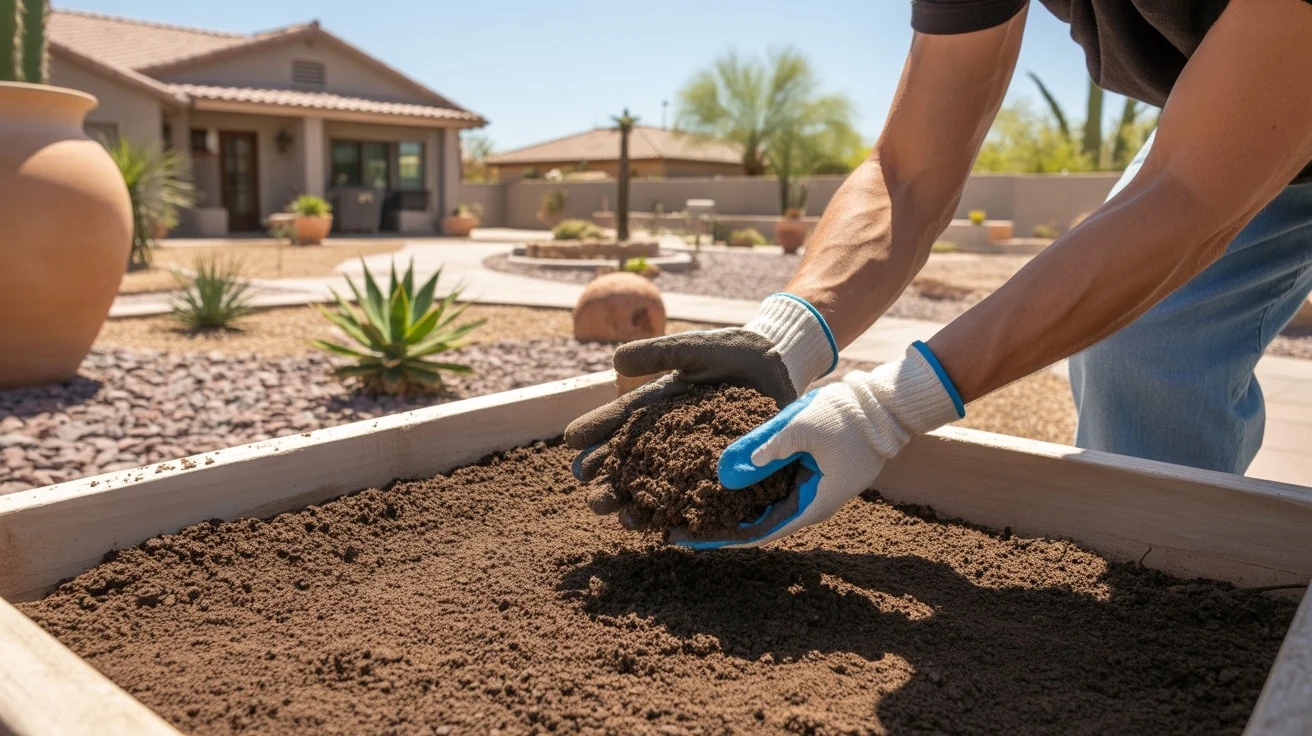
Proper watering is crucial for preventing and reversing dry soil. In the Mesa summer heat, your yard may need more frequent irrigation to stay hydrated. However, shallow, frequent watering can actually worsen dry soil by encouraging shallow root growth. Instead, aim for deep, infrequent watering that thoroughly saturates the root zone.
For lawns, apply about 1 inch of water per week, split into 2-3 deep watering sessions. Use a tuna can or rain gauge to measure your sprinkler output and adjust the run time accordingly. Water early in the morning to minimize evaporation. For trees, shrubs, and beds, use a soaker hose or drip irrigation to deliver water slowly and directly to the root zone.
Choose Drought-Tolerant Plants
When planning your Mesa landscape, opt for plants that are naturally adapted to thrive in dry conditions. Native desert plants like cactus, agave, and yucca have evolved to survive on minimal water, making them excellent choices for low-maintenance, drought-resistant yards.
Other drought-tolerant options include Mediterranean herbs like rosemary and lavender, ornamental grasses, and hardy groundcovers like ice plant or creeping thyme. By selecting plants that match your site conditions, you can create a beautiful, resilient landscape that requires less water and maintenance over time.
Upgrade to Efficient Irrigation
If you’re still relying on old-school sprinklers or hose-end nozzles, upgrading to more efficient irrigation can make a big difference in combating dry soil. Modern drip irrigation systems deliver water slowly and precisely, minimizing runoff and evaporation. They can also be automated with smart controllers that adjust watering based on weather conditions and soil moisture levels.
For lawns, consider replacing traditional sprinkler heads with high-efficiency rotary nozzles. These nozzles emit larger water droplets at a slower rate, improving penetration and reducing drift. Properly designed and maintained, an efficient irrigation system can help you keep your soil consistently moist without wasting water.
Monitor and Adjust
Solving dry soil issues is an ongoing process, not a one-time fix. Throughout the summer, keep a close eye on your soil moisture levels and your plants’ health. Check the soil before watering to avoid overwatering, which can be just as damaging as drought stress.
Use your finger or a moisture meter to assess the soil a few inches down. If it feels dry, it’s time to water. If it’s still moist, wait a day or two. Watch for signs of drought stress in your plants, like wilting, yellowing, or dropping leaves. Adjust your watering and mulching as needed to keep your soil and plants healthy and hydrated.
With these strategies in your toolkit, you can transform dry, cracked Mesa soil into a moisture-rich foundation for a thriving summer landscape. By understanding your soil, amending it with organic matter, mulching wisely, and watering deeply, you’ll be well on your way to a lush, vibrant yard that beats the heat. So don’t let the dry soil dilemma get you down – with a little know-how and some elbow grease, you can keep your Mesa oasis green and growing strong all summer long.

